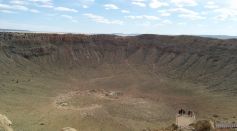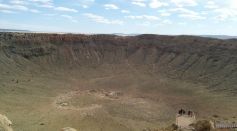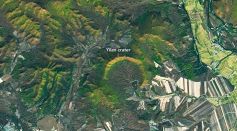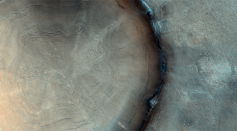Tags: Impact crater

World's First Known Mountaintop Impact Crater Caused by Asteroid Found in Northeastern China

Earth’s Oldest Impact Craters Are Vanishing; What Happened to These Circular Depressions?

720-Foot-wide Meteorite Crater Found in a Winery in Southern France, Disproving a Scientific Opinion

Huge Meteor Crater in Arizona Formed 50,000 Years Ago Still Useful for Scientific Studies

Nadir Crater in West Africa Suggests a Second Impact After the Chicxulub Crater From the Asteroid That Wiped Out the Dinosaurs

Black Beauty a.k.a. Northwest Africa 7034 Martian Meteorite Impact Crater on Earth Found Using Machine Learning
New Images of Mars Released, NASA Links the Brain Terrain to Water-Ice Lying Beneath Planet’s Surface

China's New Meteor Impact Crater 'Yilan' Might Be the Largest to Date

ExoMars Trace Gas Orbiter Spotted a Giant 'Tree-Stump' On The Red Planet's Surface

Asteroid Impacts the Inner Solar System for the Last 600 Million Years
Martian Meteorites Origin Found! Space Rocks That Landed on Earth Studied Using Machine Learning

Devastating Floods in Mars Helped Shape Famous Deepest Canyons on Red Planet
Tornado-Like Winds On Ancient Mars Were Created By The Impacts That Scoured The Surface
Basin in the Falkland Islands Shows Traits of Large Meteorite Impact; One of The World's Largest
Mars Experienced Tsunamis Three Billion Years Ago: Impact Crater Showed Proof Of Ocean
Most Popular

Largest Known Volcanic Aquifer Discovered Beneath Oregon's Cascades

New 'Supergiant' Sea Bug Found in South China Sea, Named After Darth Vader

Mediterranean Sea Was Refilled by a Catastrophic Flood Millions of Years Ago

Mysterious Cosmic Waves That Sound Like Birds Detected in Unexpected Space Region




